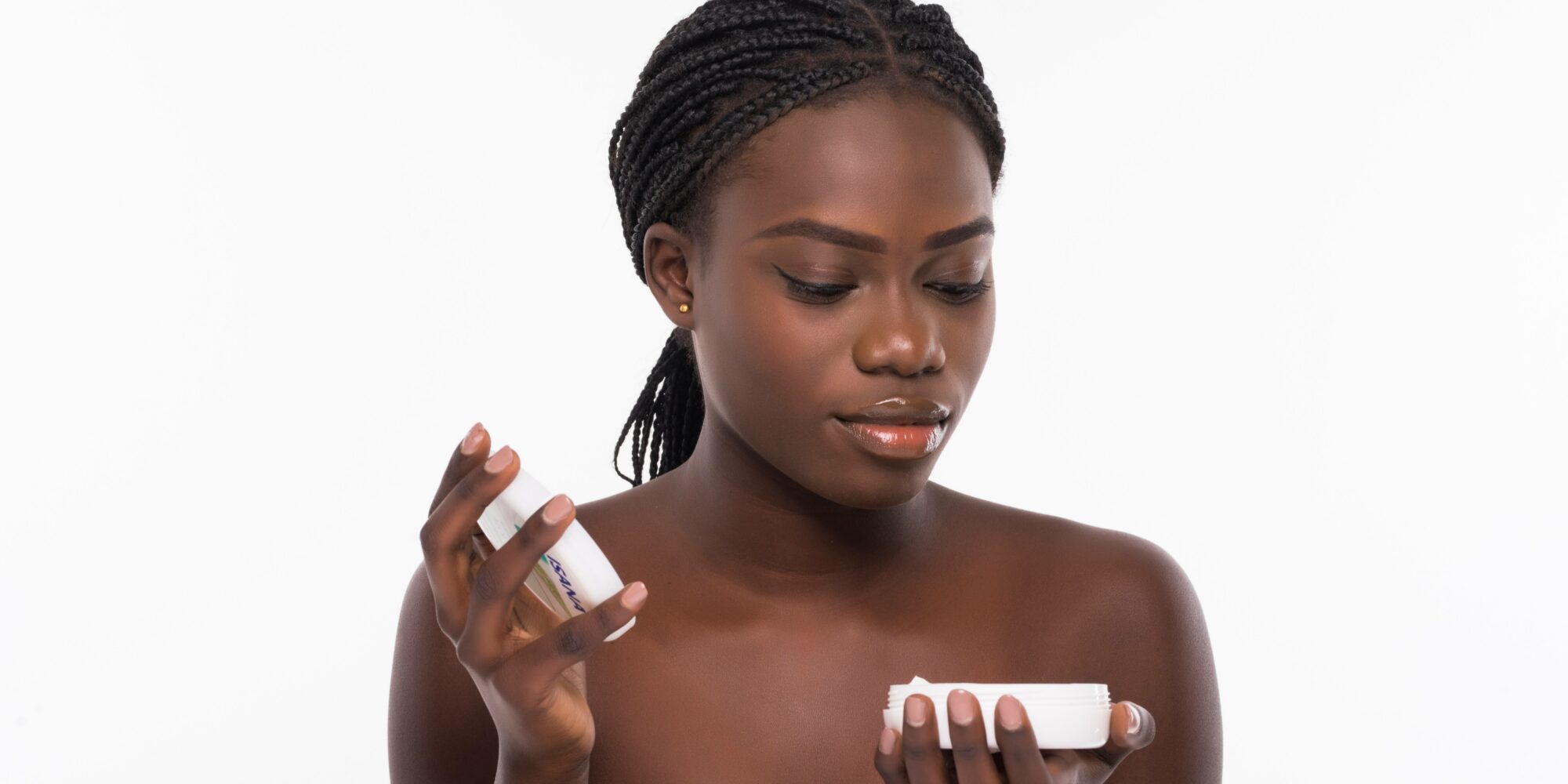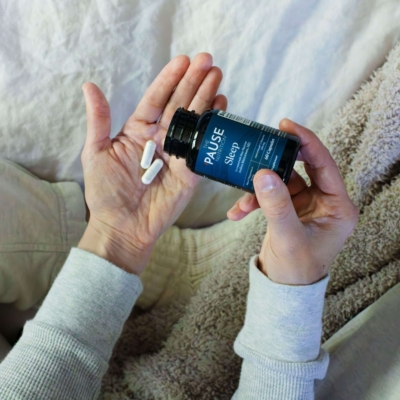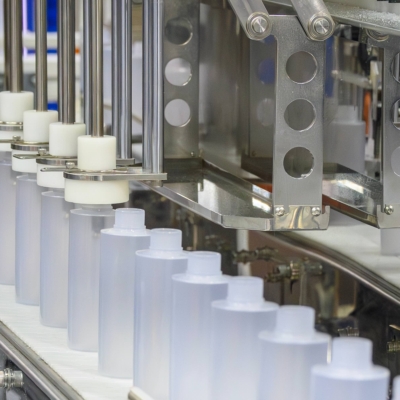
Where Will The Skinification Trend Go Next?
A recent survey by the market research firm Circana underpinned consumer demand for the skinification and multidimensionality of everything in beauty. In it, 50% of American consumers reported they seek products that combine makeup and skincare, including over 60% of gen Zers and millennials.
Prompted by the survey results, for the latest edition of our ongoing series posing questions relevant to indie beauty, we asked 12 cosmetic chemists and manufacturing executives the following: What do you see next for the skinification trend? What hybrid or multifunctional products do you believe are on the horizon?
- Tara Chacho SVP of Business Development, Cohere Beauty
The rise in skinification across haircare, fragrance and body is a trend that will continue to evolve. In haircare, for instance, we've seen a surge in scalp health treatments with similar principles applied as in skincare, helping consumers to maintain a healthy microbiome and barrier. As a result, novel ingredients, delivery systems and a rise in more nuanced diagnostics and clinical testing methods have spurred a wave of next-gen haircare products and technologies.
Skinification is also becoming a lifestyle trend that goes beyond our bodies to include environments such as home care and pet care. Consumers are seeking home and pet care products with similar standards of safety, efficacy and sensorial experiences they expect from their personal care products. This further creates opportunities for new brands to emerge and existing brands in these categories to reimagine and/or extend their product offerings and reposition themselves as a full lifestyle brand.
Consumers are also demanding more with less and more for less, giving rise to skinimalism, which focuses on using the minimum number of products possible for multiple skincare benefits. Some of the multifunctional products that appear to be gaining consumer interest include:
- Face creams/serums that are paired with actives that target several skin concerns such as hyperpigmentation, wrinkles, redness and dryness using ingredients such as niacinamide + retinol, vitamin C + peptides, retinol alternatives + PHAs
- Balms that also function as makeup removers, overnight masks, lip balms and/or ointments for dry/chaffed areas
- Oils that offer hair shine and protection while adding glow to face and body
- Face and body serums to instantly quench dry skin or soothe and calm
- Face mists that hydrate, prime, set and refresh skin
- Hypochlorous acid sprays that calm redness, reduce blemishes, soothe insect bites and refresh skin
- Deodorants that offer underarm odor protection and prevent in-grown hairs and/or hyperpigmentation with AHAs and tyrosinase inhibitors
- Deodorant full-body salves that can be used anywhere for odor protection
- Paul Marotta Senior Director of R&D, FP Labs
The beauty and personal care industry is characterized by constant change and evolution. Brands and companies that effectively adapt to these shifts will be the ones that thrive and succeed. Skinification is an important trend that consumers are commanding product developers take.
While I’ve recently encountered the term "hairification" in reference to lash and brow products during the development of the latest mascaras, I genuinely believe that the next major trend in our industry will be the “simplication” of personal care.
To the scientific community, simplification may seem like an oxymoron as these products will actually be among the most challenging to create and launch successfully in the marketplace. They will utilize cutting-edge technologies in formulation, processing and packaging to provide the most desirable textures, resulting in a seamless, straightforward and simple experience for the consumer that is both enjoyable and effective.
Furthermore, the product should deliver effective results in a simple and timely manner. The days of waiting 60 days for a wrinkle to soften are behind us. Ingredient labels will also become less complicated, focusing more on innovative delivery methods that arise from specific process design and packaging rather than relying heavily on the ingredients and chemistries.
- Kyle LaFond Founder, Natural Contract Manufacturing and American Provenance
These survey results echo what we've been hearing from both consumers and potential brand founders for the last several years. More than ever before, people are asking for more from the brands and products that they favor.
I think that multifunctional fragrance is the next big thing. Younger consumers are less likely than previous generations to purchase colognes and perfumes at exorbitant prices. These consumers are looking for value at a lower price point. I think that there are some exciting innovations coming with carrier oils that can soften and moisturize skin while providing attractive aromas.
- Angella Sprauve Cosmetic Chemist and Clean Beauty Product Developer
In my observation, the skinification trend is evolving rapidly, with consumers increasingly seeking multifunctional products that encompass various aspects of skincare, haircare and fragrance. These insights have emerged not only from my experiences at trade shows, but also through a surge of product development requests from brands.
SCALP CARE
The skinification of hair and scalp care has become a major trend, one that I’ve been following closely at trade shows for several years. Now, it’s making a significant impact in the marketplace. The idea is to treat the scalp with the same care as facial skin, recognizing that healthy hair starts with a healthy scalp.
This shift is driving the development of scalp-focused treatments that range from promoting hair growth while helping reduce the appearance of grays. As we continue to understand the connection between scalp health and hair quality, this trend will undoubtedly gain momentum and become a standard in hair care.
FRAGRANCE
The evolution of fragrance is another exciting development. We’ve moved beyond the typical alcohol-based aromas to more thoughtfully crafted scents that bring additional benefits. There’s a growing interest in clean and functional fragrances for hair and body, including mists that provide hydration and even skincare benefits.
The idea is to make fragrance not just about smelling good, but about enhancing your routine with added value. I see this approach to multipurpose fragrance becoming a staple as consumers seek out products that go beyond the traditional one-note experience.
BODY CARE
Body care is experiencing a renaissance, with new products offering multifunctional benefits. Whereas body care used to be compartmentalized, we now see products that address anti-aging, anti-acne and other specific body skin needs. The category is expanding into diverse formats like body serums, toners, oils, butters and creams, acknowledging that the skin on our bodies covers 97% of us and deserves specialized care.
- Victoria Hoffman Senior Manager of Product Development and Marketing, International Products Group
Skinification of the body is very hot right now. Consumers finally realize that they should care for all their skin, not just pay attention to their faces.
We see a lot of “skincare for the body” to eliminate crepey skin, age spots, dull, lackluster and sagging skin. We think it will be a massive sector within the beauty category with lasting power. Products like body serums, masks, laser treatments, exfoliators, etc., using active ingredients like retinol, AHAs and peptides.
Additionally, we will see a rise in hybrid wellness-infused skincare products that nourish the skin and feature supplement-like ingredients such as adaptogens, antioxidants, vitamins, minerals or various peptides. These multifunctional products provide a holistic approach to beauty, empowering consumers to enhance their skin health and overall well-being.
- Alexis Forbes-Moorehead Lead Formulation Chemist, Divinity Cosmetic Labs
The skinification trend is gaining significant traction in the men’s skincare and haircare space, presenting a growing opportunity for innovation. According to IBISWorld reports, men's skincare is trending, and as more men become invested in personal care, they are looking for multifunctional products that simplify their routines while delivering enhanced benefits.
We can expect to see hybrid formulations that incorporate skincare ingredients into men's grooming products, addressing both skin and hair health. For example, anti-aging moisturizers that double as aftershave balms will not only soothe irritation, but also provide anti-aging benefits with ingredients like peptides and antioxidants. Beard grooming creams could evolve to include hydrating and skin-nourishing ingredients, promoting both beard health and skin moisture.
Similarly, men’s haircare could see the integration of scalp-friendly ingredients such as niacinamide or salicylic acid into styling products like gels and pomades. These hybrid formulations would promote a healthy scalp while addressing common issues like dandruff and hair thinning, offering men a more holistic approach to their grooming routines.
With men increasingly seeking skincare benefits in everyday products, there is a huge opportunity to innovate in this space, tapping into the demand for simplified yet effective multi-benefit solutions.
- Andrea Buratovich Brand Consultant and Co-Founder, Indigo Private Label and Caley Cosmetics
More brands are leaning into the skinification trend, and it will become more mainstream. The unfortunate thing about our industry is there will be a lot of greenwashing and marketing claims that products do more. Consumers need to continue to be vigilant and learn about a product rather than simply going by an ingredient callout of a major brand.
Nevertheless, there is huge potential for hybrid or multifunctional products. With Caley Cosmetics, that has been one of our core values from the start. We believe you should get more from your products. Gone are the days of a 10-step skincare routine. Whether it’s makeup or skincare, every one of the Caley products is like a three- to five-step skincare routine in one. Our makeup is also all multiuse to simplify your routine.
Bringing a new product to market has also gotten so costly that, as a product developer, you want more bang for your buck. It’s more efficient to focus on developing a hybrid or multifunctional product. Products we have on the horizon with Indigo Private Label are two-in-one shampoo and conditioners. While this isn’t new, we predict it will grow in popularity. We also have multiuse balms and more foundations with SPF. It’s exciting finding ways to make products that do more, it's more sustainable and has been a fun challenge.
- Ananya Sharma Cosmetic Chemist, Next Step Laboratories
The skinification trend is certainly shaping the future of beauty, emphasizing the desire for products that offer both cosmetic benefits and skincare advantages. The revolutionary rise of hybrid beauty makeup products marks a significant shift in the world of cosmetics. It’s a trend driven by the desire for efficiency, effectiveness and overall well-being to explore a huge range of collections of hybrid beauty products.
Skincare and makeup are becoming increasingly intertwined, with many opting for tinted moisturizers or no foundation to highlight their natural skin. Brands are adding nourishing ingredients to create two-in-one products that enhance skin health, focusing on performance and benefits from ingredients like hyaluronic acid, oils and vitamins.
Brands can enhance formulas to create multifunctional products, which not only help consumers save money by reducing the need for multiple purchases, but also streamline the application process for those with busy lifestyles. This approach simplifies skincare and makeup routines, making them more accessible for individuals who may feel overwhelmed by the complexities of beauty products.
In light of this, exciting hybrid or multifunctional beauty products have been emerging, including tinted moisturizers infused with advanced skincare actives like peptides and antioxidants, which cater to those seeking a lightweight finish while tackling skin concerns. Serum-infused foundations featuring ingredients like hyaluronic acid and niacinamide could become mainstream, offering coverage alongside long-term benefits, particularly appealing to younger consumers.
Additionally, SPF-infused makeup such as foundations and setting sprays could help seamlessly integrate sun protection into daily routines. All-in-one cleansing oils that double as light makeup bases and hybrid face mists combining hydration with setting agents could simplify skincare regimens. Color-correcting creams enriched with skincare properties and nourishing lip tints blending the benefits of balms with vibrant color are also likely to attract health-conscious consumers looking for effective, multifunctional solutions.
The potential for these products lies in their ability to simplify routines and address multiple consumer needs at once. As beauty consumers, especially thegGen Z and millennials, continue to prioritize efficiency and efficacy, multifunctional products will likely thrive in the market.
- Megan Cox Founder, Genie Supply
Consumers are certainly demanding—and brands are formulating—multiuse products more than ever. Here are a few concepts we're seeing:
- Nearly all color cosmetics are formulated with long-term skin-boosting ingredients that align with the short-term benefits of the product. For example, a lip plumper that gives you plumping action now, but also gradually increases lip volume naturally over time.
- Further, almost all color cosmetics we're formulating these days are multiuse or have many uses for eyes, lips, cheeks and skin all over.
- Multiuse skincare in ways we've never seen it before: Think of a hydrating mist that doubles as a cleanser (like a makeup wipe sans the wipe) or a hand cream that can also moisturize hair.
- Waterless beauty that goes above and beyond: Hydrating eye balms that can double as hand salve, all-in-one TSA-friendly travel sticks and powders.
Brands will continue to push the limits as they find dual and all-use purposes for their products within extremely specific beauty niches.
- Rachel Johnson Founder and Cosmetic Chemist, The Charismatic Chemist
I explored the innovation of hybrid products for diverse needs at Spelman University this summer, where I defined a hybrid product as a synergistic blend of two or more product categories to produce a unique texture with expanded skin benefits. More informed consumers have created new demands where there is more interest in learning about ingredients and formula technology. Consumer desire multiuse products that simplify their routines and provide real results.
Cross-functional formulations can be complex to develop and market. With new regulatory implementations like MoCRA, the beauty industry will be required to be more responsible for product compliance and claims. Hybrid or multifunctional products have potential for high ROI, and truly exceptional products will dominate the market.
- Mary Ershadi VP of Marketing, AMR Laboratories
We have seen more brands present consumers with more two-in-one or three-in-one skincare/cosmetic options. We believe this is due to the market going towards less-is-more mindset, which started back in 2019. Consumers are more careful about their skincare routine and what they put on their skin and how much.
The five-step skincare routine which took 20 to 30 minutes every night is not as doable these days. Consumers prefer to spend the time with family and/or relaxing than doing a five-step skin care regimen. Don’t get me wrong, there are those who are committed to their skincare and spending the time. However, the market as a whole has moved to a more streamlined option.
- Flavia Zhamo Founder, EC Studios and Everyday Chemist
Today’s consumers are more informed and selective, wanting to do more with less while being skeptical of unfulfilled promises. As we saw the beauty industry face challenges in 2024, brands that delivered on multifunctionality and efficacy stood out. The skinification trend is evolving, with the next big wave likely in haircare, fragrance and continued growth in body care and makeup.
As developers, we are seeing an increase of brands wanting to develop products that treat scalp care as an extension of facial skincare. In terms of fragrance, we’re also witnessing the skinification of perfumery, with brands like Vyrao and Orebella exploring fragrances that offer benefits beyond just scent. This is an exciting frontier, though I believe the trend is still developing and hasn’t reached its full potential yet.
In line with this, I also see a rise in on-the-go products that offer ease of use and convenience. As people’s lives get busier, they gravitate toward products that can be quickly applied without compromising on results. Spray formats like Silky Water from Everyday Chemist are likely to continue to gain popularity as they provide the benefits of creams or lotions without the mess.
Brands that will succeed are those that deliver on their promises and offer multifunctional solutions that meet consumer needs in innovative ways. Westman Atelier is a great example of this, with their line of skincare-meets-makeup products that combine elegance with efficacy. Consumers are willing to invest in products that are well-formulated and truly perform, even at a higher price point.
If you have a question you’d like Beauty Independent to ask cosmetic chemists and manufacturing executives, please send it to editor@beautyindependent.com.






Leave a Reply
You must be logged in to post a comment.